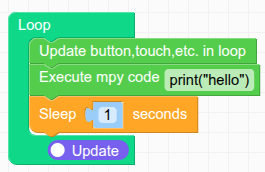Hello @HappyUser
correct, M5Tab5 has an (empty) slot on its board which takes a stamp sized expansion like CatM or LoRa or ... - see backside picture of M5Tab5.
That said, afaik at this point in time only the Stamp CatM exists. See here.
In other words, you'll need to wait until M5Stack releases a Stamp LoRa.
Thanks
Felix
